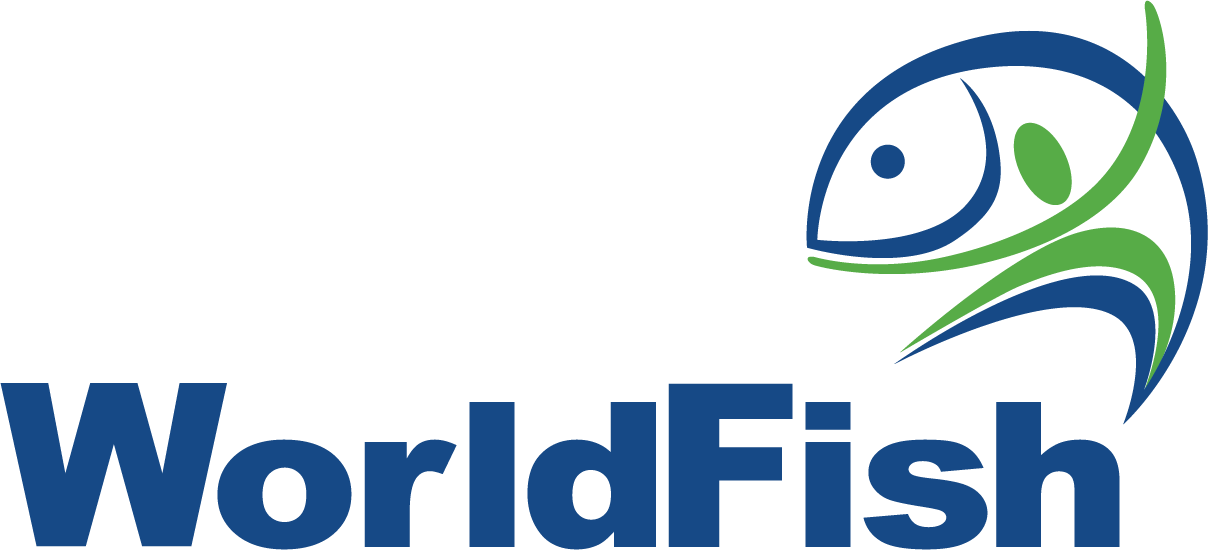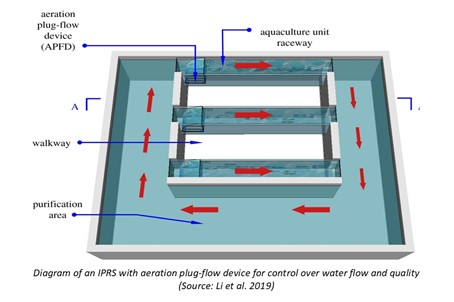In-Pond Raceway Systems for Fish Farming
Summary
An in-pond raceway system is a sophisticated aquaculture technology where optimal water chemistry is ensured by maintaining interrupted water flow and waste disposal management, allowing for a high density of fish stocking. Traditional fish farming is land and labor intensive. For instance, catfish farming in static ponds typically yields only 4,500 to 5,500 kg ha-1. Production is more efficient and profitable with techniques that maintain optimal water quality, in particular oxygenation and feed management. An in-pond raceway system (IPRS) is an inland aquaculture method where fish are kept in channels constructed within the pond and provided with constant water circulation. This allows fish farmers to use stocking densities as high as 150 kg per cubic meter, and thereby increase production levels and efficiency. The IPRS recreate the fish’s natural environment making them grow out at a faster rate and keeping them free of diseases and stress. The advantage of this fish farming method is that higher quality fish can be produced in less water and through more efficient feed conversion. In comparison to traditional ponds the IPRS technology has been found to produce 200-300% more fish.
About the Solution
Water flow is a very important factor in aquaculture production as it stimulates the growth of fish in response to velocity distribution and turbulence. Turbulence has a critical role in the transport and dispersal of excreta, nutrients, and pollutants. Another critical factor is dissolved oxygen of the pond water that must be greater than 5 mg per liter for fish to be active, behave normally, respond to feed, and avoid mass mortality. The IPRS intensify production by concentrating fish in less water volume. Airlifts or paddle wheels are used to create water flow inside the raceway channel to remove fish waste at a low energy cost. Fish waste is collected and sucked out of the water body. Continuous forced aeration is required in the system to supply fish with high levels of dissolved oxygen which further assists in their growth. Unused water serves as biological filter and is recirculated to the production area by a pump. The IPRS technology offer multiple benefits for farmers, markets, and the environment: higher fish production, lower cost, greater feed conversion ratios and feeding efficiency, more effective fish health management and pond maintenance, and zero discharge to local rivers or the environment.
Raceways have several advantages compared to ponds. Raceway production is much higher per unit volume and offer a much greater ability to observe fish; making feeding more efficient and disease problems easier to detect. Raceways also allow better inventory estimates than ponds, making size grading and harvesting less difficult. The disadvantages of raceways are related to their need for large flows of high-quality water, an asset not widely available. Another limitation is related to release of effluent because there is little or no retention time allowing for natural processes. In-pond raceway systems are suitable for intensive aquaculture practice in regions with high water availability and limited land resources. The technology is best deployed in medium- to large-scale fish farms near urban centers or trade corridors because of its sophisticated engineering. A large variety of fish can be stocked and grown efficiently such as catfish, trout, tilapia, perch, and bass. Rectangular raceways are most used, while circular units are best for broodstock production because they have more thorough circulation but make less efficient use of available floor space.
Raceways are made of three main components: an aeration area, a fish culture area, and purification area. One or more high-power pumps are used to pump water through the culture channels, forcing the water to flow through the raceways and into the purification area, thereby circulating it and forming a pathway for fish. The flow patterns in the original aquaculture raceways offer uniform velocity, causing water quality and dissolved oxygen to vary significantly from inlet to outlet. Improved aeration systems are available such as the plug-flow device that consists of a curved baffle and a set of micro-bubble tubes. It is positioned at the inlet of the raceway and the micro-bubble tubes are submerged at a specific depth, so that air is pumped into the tubes and floating bubbles are formed. A baffle curtain made of woven plastic fiber can be installed diagonally inside the pond to direct how the water flow circulates.
For a channel that is 4.9 m wide and 1.7 m deep, a paddlewheel with a water movement of 0.026 m per second generates a flow rate of 9 m3 per minute and full turnover every 5 minutes or 12 turnovers per hour. Typically, the greatest water velocities occur at mid-depth, with slightly reduced velocities at the air-water interface and greatly reduced velocities along the raceway bottom. Fitting improved aeration like the plug-flow device in an IPRS improves water recirculation and adds dissolved oxygen to the aquaculture pond. Average daily feed rates for catfish production in an IPRS range from 70 to 90 kg ha-1, and maximum daily feed rates go up to 300 to 350 kg ha-1 when fish weigh more than 0.5 kg. The growth rate of Channel catfish in this system reaches 1.8 g per day with feed conversion ratios of about 1.7:1. This efficiency is greater than that achievable in a conventional pond.
Commercialization
Commercially available
Solution Images
Institutions



